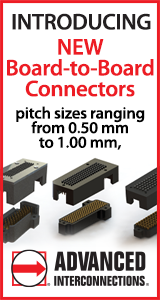|

|
|
|
|||||||||
Is De-paneling PCBs by Hand Acceptable?
Board Talk
|
|||||||||
TranscriptPhil Jim Phil This calls to mind the experience I had a number of years ago. We had a client, an American company, building satellite down-converters. The boards were being built for them in Taiwan. They were having a capacitor cracking problem. This pre-dates the days of common use of QFNs. They sent me some photographs and also some cross sectioning. Looking at the crack, it wasn't a thermal crack. It wasn't the wave solder or the reflow process, which they originally thought. Maybe it's dwelling on the wave too long, or something along those lines. It was definitely a mechanical crack, so I said, "Can you send me more slides of your process?" And all of a sudden, there was one where a guy is holding the board, it was a four-up, and he was doing a karate chop to break it apart. It wasn't a good thing for the boards. So it was, "There's the problem." Common sense will tell you you're putting undue stress on a board, breaking them that way, even if you've scored the boards properly. The IPC spec, if I recall, in "Best Practices," is about a third down from each side. You're inducing stress. Most of the pizza cutter manufacturers recommend a keep-away distance from scored area of at least five millimeters. They're addressing specifically capacitors, but the same thing goes with regard to any kind of device, especially something as tender, and vulnerable, if you will, as a QFN, or even an area aray. JimMost of the issues we see are with cracked chip components, resistors and capacitors too close to the breaking zone because of localized flexing. Certainly we're concerned with QFNs, having the weakest, least robust solder joints of any of the IC configurations. I saw a presentation at a local SMTA chapter meeting, in Boston. It was by DFR Solutions, and they showed pictures of horizontally cracked joints in QFN components due to flexing of the board. I don't recall that they were specific about whether it was de-panelization, but we know that de-panelization can be one of the biggest sources of flexing in the assembly process. Phil Jim Phil Jim |
|||||||||
Comments
|
|||||||||
|
|
|




